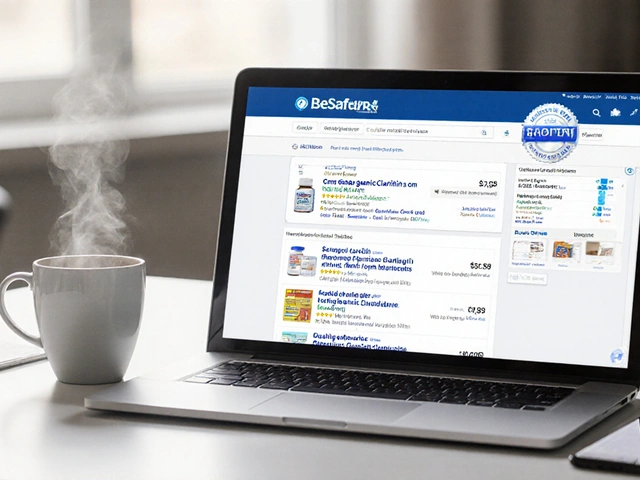If you’ve been eyeing mushroom powders for a simple health boost, here’s the straight talk: a lot of claims are wild. Puff ball supplements sit in a quiet corner of the wellness aisle, promising immune and gut support without the hype. They can help-but only if you know what you’re buying, how much to take, and what to expect. I’ll show you where puff balls make sense, where they don’t, and how to use them safely in everyday life here in the UK.
puff ball supplements
- They’re made from edible puffball mushrooms (mainly Calvatia and Lycoperdon species) and provide fibres (beta‑glucans), modest antioxidants, and basic nutrients.
- Potential perks: gentle immune support, better fibre intake for digestion, and a tidy way to add mushroom nutrients without cooking.
- Evidence is early and indirect: most solid data on immune markers comes from other mushrooms or yeast beta‑glucans-not puff balls specifically.
- Safety first: avoid if you’re allergic to mushrooms, have uncontrolled asthma (spores can irritate), or you’re on anticoagulants-speak to a clinician.
- Start low (500-1,000 mg/day), increase slowly, and pick a UK-tested product with species name, part used, and third‑party lab results.
What Puff Ball Supplements Are (and what they aren’t)
Puff balls are round, white mushrooms you might see in fields and parks in late summer and autumn across the UK. The edible ones are usually in the genera Calvatia and Lycoperdon. When fresh and immature, they’re pure white inside. Once the inside turns yellow, olive, or brown, they’re past it. The brown powder you see later in the season is spores-don’t breathe that in.
Supplement makers dry and mill the mushroom body (fruiting body) into powder, or extract it into capsules. You’ll see labels like “puffball powder,” “Calvatia gigantea extract,” or “Lycoperdon perlatum capsules.” Some blends mix puff ball with well-known mushrooms like reishi or lion’s mane. In 2025, you’ll mostly find these online, with a few on shelves in larger UK health stores.
What’s inside? Mainly polysaccharides (including beta‑glucans), a bit of protein, small amounts of minerals, and antioxidant compounds typical of culinary mushrooms. Think of puff ball as a mild, food-like supplement rather than a dramatic “medicinal mushroom.” If reishi is the strong coffee of mushroom supplements, puff ball is a gentle tea.
What they aren’t: medicine. UK regulations don’t allow medical claims for food supplements, and there are no authorised UK health claims for mushroom beta‑glucans and immune function. The best framing is “supports normal nutrition” and “may help you meet fibre and mushroom intake goals.” If a label promises to “cure” anything, skip it.
On sourcing: foragers in Britain often talk about giant puffballs (Calvatia gigantea). Those are edible when pure white inside, but for supplements, the mushroom is processed and standardised (ideally) so you don’t deal with identification. The British Mycological Society stresses careful ID: some toxic lookalikes exist (e.g., earthballs, Scleroderma), and cutting in half to check for a pure white, uniform interior is a basic rule for cooks-not a licence to DIY your own supplement.
Real Benefits You Can Expect (and the science behind them)
Let’s separate hopeful from believable. Most benefits you’ll hear about come from the mushroom world more broadly. Here’s where puff balls fit.
- Immune rhythm (not “boosting”): Mushroom beta‑glucans can “train” innate immunity-helping immune cells respond more efficiently. This effect is documented in trials using yeast or other mushroom species. Puff ball likely has similar polysaccharides, but direct human trials on puff ball are thin. Sensible expectation: modest support for immune balance over weeks, not overnight miracles.
- Digestive support via fibre: Mushroom powders add fermentable fibre, which feeds gut microbes that produce short-chain fatty acids. Better fibre patterns can mean regularity and less snacking. Go slow-gas and bloating are normal if you ramp up too fast.
- Antioxidant nudge: Lab studies show mushrooms carry antioxidant enzymes and phenolics. Puff balls won’t rival a berry-heavy breakfast, but they can complement a diet that’s light on veg.
- Easy nutrition for busy weeks: If you skip cooked mushrooms, a powder gives you a simple way to add mushroom nutrients to smoothies, soups, or porridge.
What about performance, skin, or allergies? The old folk use of puff ball spores as a wound powder is part of mushroom lore, but spores can irritate the lungs and aren’t for modern home use. Stick with oral powders from the fruiting body and keep expectations grounded. There’s no strong human evidence that puff ball alone improves VO₂ max, clears acne, or treats allergies. If you feel better on it, nice-but don’t ditch proven treatments.
Credible sources to keep you grounded: the British Mycological Society on identification basics; the NHS for common-sense supplement advice; the UK Food Standards Agency on safety and labelling; and systematic reviews (e.g., Cochrane) that often find “promising but limited” evidence for medicinal mushrooms as add-ons, not replacements, in clinical settings. As of 2025, puff ball hasn’t had the kind of large, controlled human trials that would let clinicians make strong claims.
Expectation timeline:
- Week 1-2: judge tolerance-watch for bloating, itch, or a runny nose (signs of sensitivity).
- Week 3-6: look for small wins-steadier digestion, fewer snack cravings, better regularity.
- Week 8+: decide if it’s earning the shelf space. No change? Swap it for a better-studied mushroom, or stop.

How to Choose, Dose, and Use Puff Ball Safely
Quick decision tree for whether to try puff ball:
- Do you tolerate edible mushrooms in meals? If yes, low risk. If no, don’t start here.
- Are you on warfarin or other anticoagulants? Talk to your GP or pharmacist first.
- Asthma or chronic lung irritation? Avoid any product with “spore” on the label.
- Pregnant, breastfeeding, or under 18? Stick to food; skip supplements unless a clinician agrees.
What to look for on the label in the UK:
- Latin name and part used: “Calvatia gigantea (fruiting body)”. Avoid vague “mushroom complex.”
- Standardisation or assay: polysaccharides or beta‑glucans content is a plus.
- Contaminant testing: heavy metals (lead, cadmium), pesticides, microbes. Look for third‑party lab certificates.
- Country of origin and manufacturer address (required). UK‑based brands that share test results earn trust.
Forms and typical doses (food supplement, not medical advice):
- Capsules: 500 mg each is common. Start 1 capsule daily with food for a week, then consider 2/day.
- Powder: 1-2 grams/day mixed into yoghurt, porridge, or smoothies. Start with half a teaspoon.
- Extracts (hot water): dose varies; follow label. Extracts may be easier on digestion than raw powder.
Timing: Morning with breakfast works for most. If you’re sensitive to fibre, split the dose-half with breakfast, half with lunch. Hydrate. Fibre without water can backfire.
Stacking tips (keep it simple):
- Pair with vitamin C-rich foods (kiwi, berries) to support antioxidant balance from your diet.
- If immune support is your goal, stacking with better‑studied mushrooms (reishi for relaxation, shiitake for culinary fibre, lion’s mane for focus) can make sense-one at a time, so you can track what’s doing what.
- Avoid taking with high‑dose iron or zinc at the exact same moment; minerals can upset some stomachs when mixed with new fibres. Space by an hour if you’re sensitive.
Who should avoid or use caution:
- Known mushroom allergy or oral allergy syndrome to fungi-skip it.
- Asthma, chronic bronchitis, or occupational spore exposure-avoid any spore-based product. Choose fruiting body powder only.
- On anticoagulants or antiplatelets-speak to your GP. Mushrooms can be high in vitamin K variability and may affect clotting indirectly.
- Immunosuppressed-get clinician advice. “Immune support” is not always helpful if your immune system is intentionally damped down.
- Pregnant or breastfeeding-safety data is lacking. Stick to culinary mushrooms in meals.
UK price sense-check (2025):
- Powder: £12-£22 for 100-200 g depending on testing and origin.
- Capsules: £10-£25 for 60-120 caps at 500 mg each.
Storage and shelf life: Keep it sealed, cool, and dry-cupboard, not the steamy kitchen counter. Aim to finish within six months of opening. If it smells musty or tastes off, bin it.
| Mushroom | Main Compounds | Evidence Strength (human) | Typical Daily Dose | Best For | Notes |
|---|---|---|---|---|---|
| Puff ball (Calvatia/Lycoperdon) | Polysaccharides, fibre, modest antioxidants | Limited; indirect via mushroom beta‑glucan data | 1-2 g powder or 500-1,000 mg capsules | Gentle daily fibre/immune nudge | Mild taste; safest when fruiting body only |
| Reishi (Ganoderma) | Triterpenes, beta‑glucans | Moderate for sleep/relaxation markers | 1-3 g extract | Stress, wind‑down routines | Bitter; can lower blood pressure |
| Lion’s mane (Hericium) | Hericenones, erinacines | Emerging for cognition; small trials | 1-3 g extract | Focus and study blocks | Watch for tingling skin in some users |
| Shiitake (Lentinula) | Lentinan, fibre | Moderate as culinary support | Cooked food or 1-3 g powder | Gut-friendly cooking swaps | Strong savoury taste |
Practical Routines, Recipes, and Use Cases
Morning routine (busy, desk-heavy day): Mix 1 g puff ball powder into plain yoghurt with a sliced kiwi and a handful of oats. It disappears into the texture, adds fibre, and takes two minutes. If you prefer capsules, take one 500 mg with breakfast and another with lunch after week one.
Training day (5k run or gym): Go for food-first recovery-protein, carbs, and fluids. If you like a post-workout smoothie, add 1 g puff ball plus a banana, whey or pea protein, and cocoa. Don’t expect performance gains from the mushroom; it’s there for gentler digestion and an antioxidant nudge.
Heavy travel week: Your rhythm’s off, meals are random, and fibre is low. Capsule form is handy here: one with breakfast. Sip water through the day. If your stomach is sensitive, keep it to one cap daily and reassess once you’re home.
Budget approach: If your goal is pure fibre and gut regularity, you might get more impact from oats, beans, and ground flaxseed. Puff ball sits in the “nice-to-have” layer. Use it if you already eat well and want a simple add-on.
When to switch: If after eight weeks your digestion or energy feels no different, swap to a better‑studied mushroom with a clearer target (e.g., lion’s mane for focus, reishi for sleep wind‑down) or take a break. Supplements should earn their place.
Simple recipes:
- Oat pot: 40 g oats, 1 g puff ball powder, pinch of cinnamon, milk of choice. Top with frozen berries.
- Savoury soup boost: Stir 1-2 g puff ball into a bowl of tomato or mushroom soup before serving.
- DIY trail mix: Nuts, pumpkin seeds, chopped dark chocolate, and a small sachet of puff ball powder to sprinkle over yoghurt on the go.

FAQ and Next Steps
Is puff ball safe every day? For most healthy adults, yes in food-like doses (1-2 g/day). If you’re on medicines or have health conditions, check with a clinician. Stop if you notice rash, itch, or breathing issues.
Can I forage and make my own powder? It’s risky unless you’re skilled. Misidentification can be serious. UK mycology groups teach ID, but for supplements, go with tested products that show species, part used, and lab checks.
Will it help my immunity through winter? It may support your overall fibre and nutrition, which helps. But sleep, vitamin D, hand hygiene, and vaccines are the proven pillars. Think of puff ball as a helper, not a shield.
How long to feel anything? Digestive changes can show in 2-3 weeks. Immune effects are subtle and hard to “feel.” Judge by consistency: regularity, fewer mid-afternoon slumps, or steadier appetite.
Any food interactions? Not major. If you’re sensitive, take it with a meal. Space it from high‑dose minerals if you get nausea mixing supplements.
What if it makes me gassy? That’s common when adding fermentable fibre. Halve the dose, drink more water, and consider a probiotic food (live yoghurt, kefir). If it persists after two weeks, it may not suit you.
Is spore powder the same thing? No. Spore products are a different material and can irritate lungs. Choose fruiting body powder or extract for daily use.
Can children use it? There’s no robust safety data for kids as a supplement. Keep it to normal culinary mushrooms in meals unless advised by a clinician.
Next steps if you’re ready to try:
- Pick one brand that lists the Latin name, part used, and shows lab testing (UK/EU standards).
- Start at 500 mg/day (capsule) or 0.5-1 g/day (powder) with breakfast for a week.
- Track three things: digestion (bloating/regularity), energy dip at 3-4 pm, and cravings. Note changes weekly.
- At week 3, consider moving to 1-2 g/day if well tolerated.
- At week 8, keep it only if you can name a clear benefit.
Troubleshooting quick fixes:
- No effect after 6-8 weeks: Stop for two weeks, then either re‑trial or try a better‑studied mushroom aligned to your goal.
- Bloating or cramps: Cut the dose in half, drink an extra glass of water, and pair with food. If symptoms persist, discontinue.
- Skin itch, hives, wheeze, or tight chest: Stop immediately and seek medical advice-could be allergy.
- On new meds: Pause the supplement and ask your GP/pharmacist, especially with anticoagulants or immunosuppressants.
- Weird taste or damp clumps in the tub: It’s probably spoiled. Discard and store the next one in a cool, dry spot.
Bottom line: Puff ball is a gentle, food-like supplement. It won’t rewrite your biology, but it can quietly support fibre intake and round out a diet that’s short on mushrooms. Keep it boring and consistent, respect your body’s feedback, and let the results decide if it stays in your cupboard.










Comments (10)
ravi kumar
August 29, 2025 AT 23:33 PMGood practical guide, clear on the spore risk which people gloss over. Start-low advice is solid and the label checklist is exactly what shoppers need. Foragers should not assume every white puff is safe; mis-IDing is common and can be dangerous. If you get allergic reactions to cooked mushrooms, treat supplements like any new food and stop immediately. The anticoagulant warning is real and underplayed in many stores around the world. I would add: check for batch testing rather than marketing buzzwords, that matters more than pretty packaging. The storage note is helpful, drying out in humid climates ruins a tub fast. Overall this keeps it honest and practical, which is rare in the supplement aisle.
SandraAnn Clark
September 2, 2025 AT 07:33 AMNice to see a sober take that doesn't promise miracles. The writer lays out what puff ball is and what it is not and keeps the hype out of it. I like the food-first angle because it makes supplements feel like helpers not crutches. The timeline for noticing effects is useful and realistic. People forget that fibre changes take time and patience. The label checklist is the sort of checklist that stops you wasting money on vague blends. The warning about spores and asthma is important and repeated in the right places so it sticks. I also appreciate the practical recipes which make it easy to actually use a powder and not let it sit. The bit on stacking with other mushrooms is sensible, with the caution to try one thing at a time. The dosing suggestions feel measured and not scary. The safety flags for pregnancy and immunosuppression are correct and responsibly stated. Price guidance helps set expectations about quality and testing. The storage advice is the kind of small tip that saves money and avoids waste. Overall this guide treats puff ball like a modest addition to a decent diet and not a wonder cure. That approach builds trust and helps people make better choices without fear or false hope.
Vaibhav Sai
September 5, 2025 AT 15:33 PMSmall phrasing note that might help clarity and flow. The list on label flags is excellent but could be tightened with a comma or two for rhythm, especially around the Latin name and part used, which deserves emphasis. Also, the bolding of beta‑glucans is smart, but a short inline definition could help casual readers grasp why polysaccharides matter. The timeline section is very helpful; it reads like a plan, which people respond to. I liked the week-by-week markers and the practical stopping rule at eight weeks; that keeps expectations realistic. The recipe ideas are sensible and low-effort which is perfect for daily habit formation. Good use of UK sources to anchor advice. Overall clean, practical, and readable. Keep that voice for other mushroom guides too. Thanks for the practical structure and that calm tone. Well done here.
Lindy Swanson
September 8, 2025 AT 23:33 PMMost of this feels like sensible common sense repackaged as a trend piece. Emphasising food first and lab testing is the only part that feels like it landed for me. The rest is like a polite nod to people who want a new thing to put in their smoothies. I don't buy the idea that gentle equals pointless; a mild daily fibre nudge can genuinely help digestion if someone is low on veggies. The warnings are fine but not earth-shattering. The foraging cautions should be louder, because people love taking unnecessary risks. Overall it reads like a tidy consumer primer designed to calm anxieties and sell a wishful idea without overpromising. Fine for shoppers who want low-risk experiments.
Amit Kumar
September 12, 2025 AT 07:33 AMTotally agree with the food-first bit :)
This is exactly how I use supplements - small, consistent, low drama. Take one capsule with breakfast and sip water all day. Keeps things steady and I actually feel the digestion settle within a couple of weeks. Small wins count 🙂
Crystal Heim
September 15, 2025 AT 15:33 PMSkip the fluff and go for proof. Look for certificates and species names. Avoid vague marketing and blends with no assays. If you cannot find third-party testing, move on. Stick to fruiting body only. If it smells off, toss it. Clinical caution about anticoagulants is non-negotiable. Supplements are supplements not medicines.
Sruthi V Nair
September 18, 2025 AT 23:33 PMI like the pragmatic stance and the stepwise plan for testing its effects. Start small, watch digestion, track mid-afternoon energy - simple metrics are often better than flashy promises. Adding a small daily ritual around these tiny tests turns them into sustainable habits that reveal real change over time. If you pair the powder with whole foods and a bit of movement you amplify small gains. Consider keeping a short note each morning about sleep and mood to see subtle patterns. If the supplement becomes part of a mindful routine it teaches more about your body than the product itself. When something is gentle, attention matters more than dosage. Use the eight-week rule as a learning point, not a failure metric. If you stop after eight weeks, reflect on what else in your diet could be improved. The guide encourages curiosity and caution in equal measure and that's a good balance for anyone experimenting.
Mustapha Mustapha
September 22, 2025 AT 07:33 AMClear, balanced, and low drama. The reminder to hydrate when upping fibre is something people forget. Also like the suggestion to choose UK-tested brands if possible. Keeps things sensible without being preachy. Will try a capsule routine during travel weeks like suggested.
Ben Muncie
September 25, 2025 AT 15:33 PMStart slow and watch for reactions.
kevin tarp
September 28, 2025 AT 23:33 PMMinor grammar and style pointers that may tighten the guide and help readers follow dosing and safety details more clearly.
Write doses consistently with numerals for quantities under 10, for example use “1–2 g” rather than “one to two grams” for quick scanning. Use an en dash between ranges to avoid confusion. Keep Latin names italicized in final layout if possible, but for plain text ensure the genus and species are together with the part used in parentheses like this: Calvatia gigantea (fruiting body). When listing contraindications, group similar warnings together and separate them with semicolons for clarity. Use a single style for units - either g or mg - and avoid mixing them on the same line without a clear conversion. The storage and spoilage guidance is good; perhaps note a visual test and a smell test as quick rejection rules. These small edits will help readers parse the facts quickly and act safely.